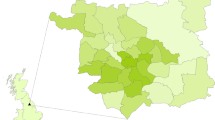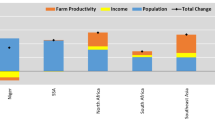Abstract
Rising food prices and economic stagnation mean that access to affordable, nutritious food is a real problem, even in high-income countries such as the USA and Australia. It is claimed that urban agriculture (UA) reduces food costs and therefore has a role in improving household resilience during economic hardship. However, there is scant data to suggest that UA can appreciably improve household self-sufficiency in a crisis. This paper addresses the gap between claims and reality when it comes to UA actually reducing food costs. Using linear programming (LP), factors such as crop yields, food prices and inputs (such as irrigation water) can be quantified realistically, and an objective (e.g. overall diet cost) can be optimised. Constraints are applied to force the UA production regime to conform to a balanced diet. Subject to these constraints, optimisation yields a best-case estimate of the outcome, so can be seen to provide a “cautiously optimistic” result.
The model is run for a case study in Adelaide, South Australia, and results suggest a typical high meat consumer could reduce their food cost by approximately 10 % with substantial home food production (including intensive poultry rearing for meat). Meanwhile, a shift in diet towards vegetarianism would deliver twice the saving, with a further 10 % achievable through UA. In the context of resilience, the results suggest that households could save a modest amount of money through dietary change and by growing some of their own food. The modelling revealed a trade-off between cost-saving and self-sufficiency (measured as percentage of home-grown dietary protein), but growing 10–15 % of dietary protein on 40 m2/person appears plausible without sacrificing financial savings. Optimisation represents a quantitative framework that is suitable for a variety of extensions to help ground claims being made around UA and local food production, such as investigating the potential for reducing dependence on transport by provisioning food from within and around a city. The model would be greatly improved with more accurate data on yield, water and fertiliser inputs.




Similar content being viewed by others
References
ABS (2011) 6530.0 Household Expenditure Survey, Australia: Summary of Results 2009–10., Australian Bureau of Statistics
Allen RG, Pereira LS, Raes D, Smith M (1998) Crop evapotranspiration—Guidelines for Computing Crop Water Requirements. FAO Irrigation and Drainage Paper 56. Food and Agriculture Organisation of the United Nations, Rome, www.fao.org/docrep/x0490e/x0490e00.htm. Accessed December 2013
Barthel S, Isendahl C (2013) Urban gardens, agriculture, and water management: sources of resilience for long-term food security in cities. Ecological Economics 86:224–234
Baylock JR, Gallo AE (1983) Modeling the decision to produce vegetables at home. American Journal of Agricultural Economics 65(4):722–729
Brown KH, Jameton AL (2000) Public health implications of urban agriculture. Journal of Public Health Policy 21(1):20–39
Darmon N, Ferguson E, Briend A (2003) Do economic constraints encourage the selection of energy dense diets? Appetite 41(3):315–322
Dietitians Association of Australia (2011) A modelling system to inform the revision of the Australian guide to healthy eating., Report to the National Health and Medical Research Council (NHMRC), Commonwealth of Australia
FAO (2014) State of World Fisheries and Aquaculture: opportunities and challenges., Report to the Food and Agriculture Organisation of the United Nations, ISSN 1020–5489
FAOSTAT (2013) Statistical Division, FAO., Online database http://faostat3.fao.org/faostat-gateway/go/to/download/Q/*/E . Accessed July-August 2013
Ghosh S, Vale R, Vale B (2008) Local food production in home gardens: measuring on-site sustainability potential of residential development. International Journal of Environment and Sustainable Development 7(4):430–451
Gladek E (2011) Polydome: high performance polyculture systems. InnovatieNetwerk, Utrecht
Gray L, Guzman P, Glowa KM, Drevno AG (2014) Can home gardens scale up into movements for social change? The role of home gardens in providing food security and community change in San Jose, California. Local Environment: The International Journal of Justice and Sustainability 19(2):187–203
Grewal SS, Grewal PS (2012) Can cities become self-reliant in food? Cities 29(1):1–11
Marten GG, Abdoellah OS (1987) Crop diversity and nutrition in West Java. Ecology of Food and Nutrition 21:17–43
McLennan W, Podger A (1999) National Nutrition Survey: foods eaten—Australia 1995., Australian Bureau of Statistics Catalogue No. 4804.0
Mekonnen MM, Hoekstra AY (2011) The green, blue and grey water footprint of crops and derived crop products. Hydrology and Earth System Sciences 15:1577–1600
Mekonnen MM, Hoekstra AY (2012) A global assessment of the water footprint of farm animal products. Ecosystems 15(3):410–415
Mollison BC, Holmgren D (1978) Permaculture One: a perennial agricultural system for human settlements. Transworld Publishers, Melbourne
NHMRC (2013) Australian dietary guidelines. National Health and Medical Research Council Publication N55, Canberra
NUTTAB (2010) Nutrient tables for use in Australia., Food Standards Australia New Zealand. Online database http://www.foodstandards.gov.au/science/monitoringnutrients/nutrientables/ . Accessed July-August 2013
Patel I (1991) Gardening’s socioeconomic impacts. Journal of Extension 29(4):7–8
Pink B (2013) Socio-Economic Indexes for Areas (SEIFA)., Technical Paper 2033.0.55.001, Australian Bureau of Statistics
SA Government (2013) Submission to Productivity Commission on the Review of the Australian Automotive Manufacturing Industry, November 2013.,http://www.pc.gov.au/__data/assets/pdf_file/0014/130226/sub068-automotive.pdf. Accessed May 2014
Satzewich W, Christensen R (2011) SPIN-farming basics: How to grow commercially on under an acre.. ISBN 978-0-615-38409-2
Ward JD, Ward PJ, Mantzioris E, Saint C (2014a) Optimising diet decisions and urban agriculture using linear programming. Food Security 6(5):701–718
Ward JD, Ward PJ, Saint CP, Mantzioris E (2014b) The Urban Agriculture Revolution—implications for water use in cities. Water Journal 41(1):69–74
Wise P (2014) Grow your own: the potential value and impacts of residential and community food gardening., Policy Brief No. 59, March 2014. The Australia Institute, ISSN 1836–9014
Author information
Authors and Affiliations
Corresponding author
Rights and permissions
About this article
Cite this article
Ward, J.D. Can urban agriculture usefully improve food resilience? Insights from a linear programming approach. J Environ Stud Sci 5, 699–711 (2015). https://doi.org/10.1007/s13412-015-0306-0
Published:
Issue Date:
DOI: https://doi.org/10.1007/s13412-015-0306-0




